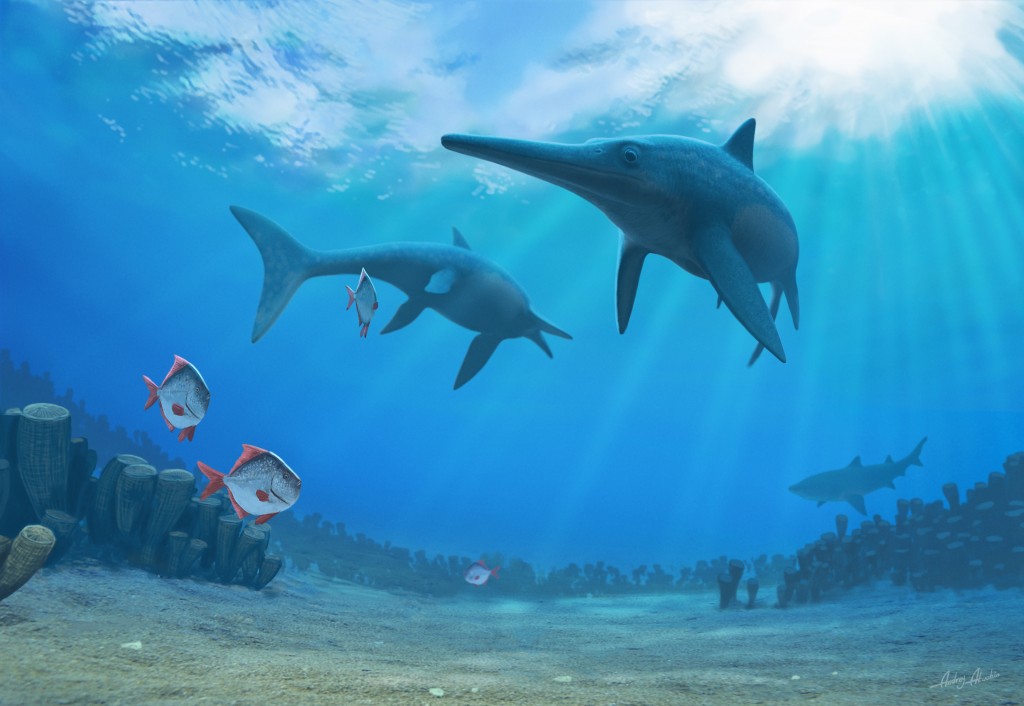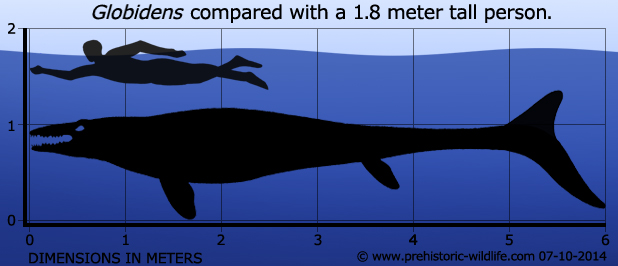When the Amber Waves Were Blue
April 13, 2019

When the Amber Waves Were Blue
Anyone who has ever driven through Kansas is familiar with the endless wheat fields whose brassy waves resemble those of the ocean.
Not everyone knows that when they are in Kansas, they are standing on what was once the bottom of a 3,000 foot-deep ocean called the Western Interior Seaway.
The Western Interior Seaway existed towards the end of the dinosaur era, and at its largest was 600 miles wide, 3,000 feet deep, and 2,000 miles long.
There is extensive fossil evidence of this vast ocean, and the Museum of World Treasure's next Coffee with the Curator speaker, Mike Everhart, has written a book about the life of the Western Interior Seaway called The Oceans of Kansas.
History of the Western Interior Seaway
The Western Interior Seaway began forming in the mid-Cretaceous period. At its greatest size, the Western Interior Seaway stretched from the Rockies to the Appalachians. At its deepest the Seaway was approximately 3,000 feet deep.
Carbonate depositions suggests that the Seaway was warm and tropical. Kansas' Monument Rocks, an exposed chalk formation and one of the 8 wonders of Kansas, are examples of these deposits. Another formation resulting from the Western Interior Seaway is the Laramie Formation in northeastern Colorado.
The Seaway was fed by two continental watersheds which deposited silt creating delta-systems along its coast.
Life in the Western Interior Seaway
We know from extensive fossil remains that the Western Interior Seaway was populated by some fearsome creatures. For instance, Globidens dakotensis, was a shell crushing monasaur from the late cretacious period whose remains have been found in Western Kansas. The Globidens evolved globe-shaped teeth perfect for crushing the hard shells of their prey. These creatures could grow to be 6 meters long!
fossil remains that the Western Interior Seaway was populated by some fearsome creatures. For instance, Globidens dakotensis, was a shell crushing monasaur from the late cretacious period whose remains have been found in Western Kansas. The Globidens evolved globe-shaped teeth perfect for crushing the hard shells of their prey. These creatures could grow to be 6 meters long!
Another Seaway creature was the Cretoxyrhina mantelli. These vicious predators were some of the largest sharks in the Late Cretaceous seas. They have been given the nick-name "Ginsu Shark" after Ginsu knives because of the way they eviscerated the flesh of their prey. The Cretoxyrhina mantelli fed on monasaurs like the Globidens.
Sharks are largely made of cartilage which does not fossilize. Most information about the Cretozyrhina mantelli comes from their teeth. We know that these sharks could grow up to 7 meters.
Learn More About the Western Interior Seaway
If you're interested in the history and paleontology of the Western Interior Seaway, please come to our next Coffee with the Curator event, featuring paleontologist Mike Everhart!